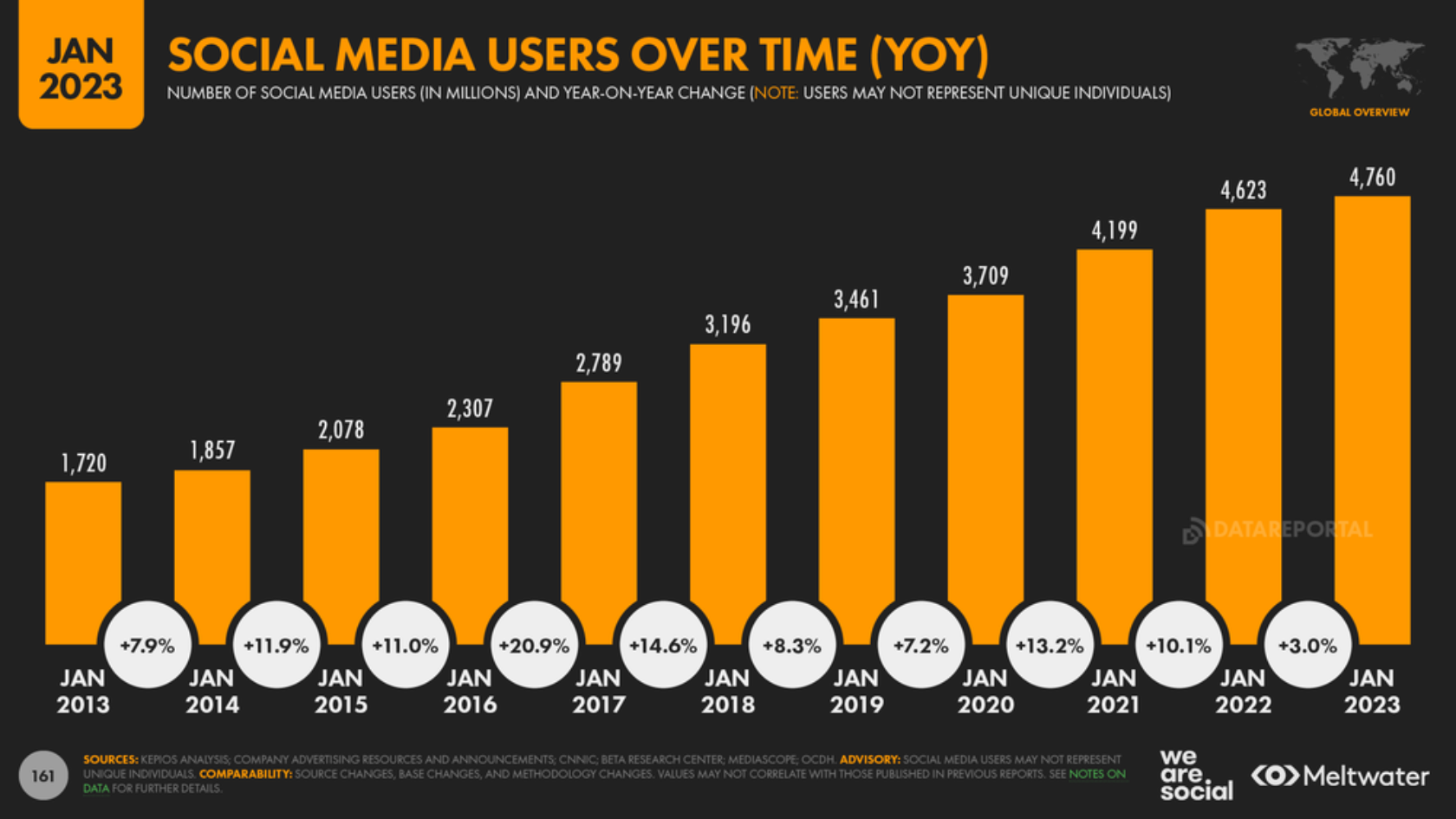The Value of Social Media Advertising
Social media advertising has become a vital tool for businesses in today’s digital age. With billions of users on social media platforms, companies must understand its benefits and how it can generate revenue.
Understanding the power of social media can make a difference in driving success. In this blog, we will explore the importance of social media and how companies can leverage it to achieve their goals. Let’s dive in and explore the value of social media for your business. Here’s what you need to know.
Why is Social Media Important?
Social media has become an increasingly essential tool for businesses in today’s digital age. According to Statista, social media advertising spending in the U.S. will reach over $94.4 billion in 2023. Social media advertising spending will hit $122.2 billion by 2026. This trend shows no signs of slowing down. With the increasing number of social media users, it’s clear why brands need to prioritize their social media presence.
In today’s competitive marketplace, a solid social media strategy is now optional but essential for businesses looking to succeed. By 2027, nearly 6 billion people will be using social media worldwide. As such, social media provides businesses an outstanding opportunity to connect with a large audience.
By leveraging social media platforms, companies can engage with their customers personally, build brand authority, and generate leads and revenue. It’s a cost-effective way to reach a targeted audience and foster customer relationships. Let’s take a look at who uses social media.
Who’s On Social Media?
Businesses must understand the demographics of their target audience when crafting their social media advertising strategies. According to HubSpot, marketers primarily target younger generations, with 84% targeting Millennials, 52% targeting Gen X, and only 22% targeting Gen Z. Meanwhile, Baby Boomers only make up 14% of the target audience for social media advertising.
The Digital 2023: Global Overview Report reveals that women tend to spend more time on social media platforms than men. The report also showed a decline in social media usage across all genders as they age. Consequently, businesses should consider these demographics when creating their social media campaigns to ensure their content resonates with their target audience.
By understanding different demographics’ social media habits and preferences, businesses can create targeted campaigns that engage and convert their desired audience. With social media advertising spending projected to continue increasing, ensuring your brand’s message reaches the right people at the right time is essential.
Engage On Social Media
Social media offers businesses an unprecedented opportunity to engage with their customers personally. By leveraging social commerce, you can attain the following:
- Interact with their clientele.
- Create a sense of connection.
- Drive engagement through feedback or comments.
However, businesses must create compelling content that resonates with their audience to make the most of social media engagement. Relevant posts, videos, and images will generate positive reactions, encouraging engagement and sharing.
By thoughtfully planning and executing your social media strategy, you can build a loyal following, increase customer retention, and more. If you haven’t already, it’s time to start engaging with your customers on social media!
Building Brand Awareness Across Multi-Platforms
Establishing brand awareness is paramount to maintaining a solid online presence. According to research, 76% of consumers claim that content significantly influences purchasing decisions. People trust others; customer reviews and testimonials can help build trust and influence purchasing decisions.
Social media gives businesses an authentic way to showcase their brand and build trust with their audience. By sharing content featuring real people who love their products, companies can demonstrate their value and establish a loyal customer base. Building brand awareness through social media is crucial in today’s digital age. Businesses can build trust, establish brand authority, and drive sales by leveraging social media to showcase their products and engage with their audience.
Let’s take a look at some social media platforms that can help build brand awareness.
Social Media Platforms
Choosing the best channels for your business can be confusing at the beginning. There are a lot of platforms out there to choose from. Depending on the type of business you are in, you may be making a mistake by not being present on all of the platforms. Here’s a quick breakdown of some of the most popular platforms businesses use today.
Instagram: This is a great visual platform. It’s a great platform to showcase products and connect with influencers to grow your customer base. 41.5% of Meta’s revenue will come from Instagram in 2023, and its ad revenues are growing faster than Facebook. With over 1.3 billion users worldwide, it’s a platform to have a presence on.
Facebook: Is one of the biggest social media platforms and the oldest around. Facebook offers a targeted way to engage with prospects and customers.
LinkedIn: LinkedIn is the place to be for B2B businesses and provides opportunities for B2C too. Businesses can connect in the B2B space organically and through paid advertising. Content that works well on this platform is blogs, white papers, eBooks, and industry-related content.
Twitter: Twitter is a real-time platform, meaning your content should be timely and relevant. It can be an excellent customer service channel for brands as it allows quick replies, and its hashtags help discover new and trending content.
Creating a Strategy That Works
It’s not enough to simply have a presence on social media; businesses must create a strategy that works. This involves identifying the right social media platforms to target your audience, crafting engaging content that resonates with followers, and consistently adapting your approach based on data and feedback. By taking a thoughtful and intentional approach to social media, businesses can build a loyal following, increase brand awareness, and drive sales.
At Onimod Global, we’re passionate about our experience in brand strategy and social media advertising in order to help businesses succeed with modern marketing strategies. Contact us today to learn more about how we can help elevate your business to the next level.


